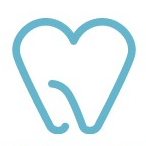The Importance and Methods of Teeth Cleaning
What is teeth cleaning?
Teeth cleaning, also known as oral prophylaxis or supra-gingival scaling, is a professional dental cleaning procedure. It uses dental instruments to remove tartar, plaque, and stains from the gum line, and then polishes the tooth surface to delay the re-deposition of plaque and tartar. Plaque and tartar are the main local irritants of periodontal disease, so teeth cleaning is the most effective method to remove plaque and tartar from the teeth.
Indications
1. Tartar and pigmentation.
2. Periodontitis and periodontal disease.
Teeth cleaning is the main method for treating gingivitis and the first step in periodontitis treatment.
3. Preventive treatment.
Patients who have undergone periodontal treatment should undergo regular teeth cleaning during the maintenance period, which is an important measure to maintain periodontal health and prevent gingivitis and periodontitis from occurring or relapsing.
4. Preparation for other oral treatments.
Teeth cleaning can be used as a preparatory procedure for orthodontic treatment, oral rehabilitation, and some oral surgeries.
Contraindications
1. Patients with cardiac pacemakers.
2. Patients with malignant tumors in the gum area.
3. Patients with active angina, myocardial infarction within the past six months, uncontrolled hypertension, and heart failure are not suitable for routine teeth cleaning treatment.
4. Patients with acute inflammation of local oral soft and hard tissues (except acute necrotizing gingivitis).
5. Patients with various bleeding disorders.
6. Patients with certain acute infectious diseases, such as acute hepatitis.
7. Pregnant women.
Teeth cleaning methods
1. Manual tooth scaling:
Manual tooth scaling is the most primitive method of teeth cleaning. The dentist uses handheld cleaning instruments for manual scraping and scaling. Although it has low efficiency and average cleaning effect, it causes almost no damage to the teeth. Manual tooth scaling is suitable for children.
2. Ultrasonic tooth cleaning:
Ultrasonic tooth cleaning is the use of ultrasonic cleaning instruments to remove plaque and tartar from the gums, to slow down plaque deposition. The high-frequency vibration of ultrasonic waves causes minimal damage to the tooth surface. It has a short cleaning time, easy operation, significant effect, does not require anesthesia, and has no side effects. Ultrasonic tooth cleaning is the most common method of teeth cleaning.
3. Sandblasting teeth cleaning:
Sandblasting dental cleaning is an additional step on top of regular dental cleaning, using special salt sand and high-pressure water for further cleaning. Sandblasting has a better effect in removing stains on teeth and is suitable for patients who often smoke, drink tea, drink alcohol, or drink coffee, which can cause dental plaque or mild discoloration. For patients without severe pigment deposition, ultrasonic cleaning is sufficient.
The Importance of Dental Cleaning
The main purpose of dental cleaning is to prevent and treat oral diseases. Through dental cleaning, the inflammation conditions of gum disease and periodontal disease can be reduced. For patients with obvious periodontal disease, in addition to regular cleaning (i.e., gingival cleansing), gingival curettage, root planing, and polishing are usually required, which is deep dental cleaning (i.e., subgingival scaling). Therefore, regular dental cleaning is crucial. Oral health experts recommend having dental cleaning every six months to one year to effectively prevent the occurrence of periodontal disease and gum disease.

